Compared to a battery that produces electricity from the rays of the sun, a self-assembled solar collector heats the liquid coolant in it. Liquid heated by the sun, obeying physical laws, rises from the collector to the storage tank or directly to the place of its use. This system does without the help of electricity and is completely passive.
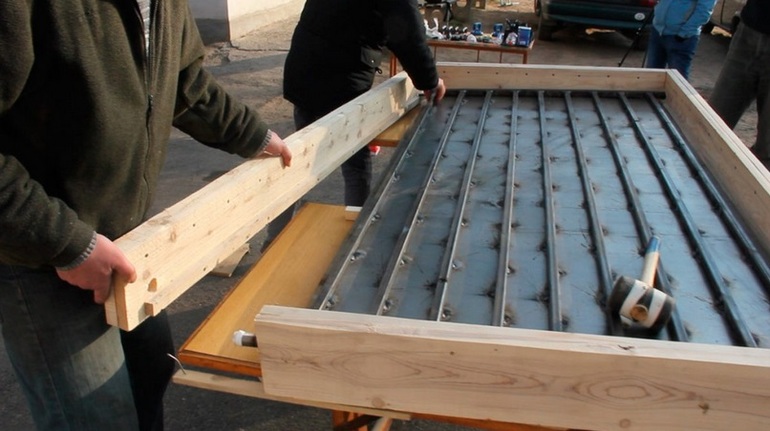
Content
Types of Solar Collectors
Varieties of solar collectors can be classified according to several fundamental criteria. The main ones are coolant temperature and performance.
Typically, the coolant is ordinary water, and sometimes it can be air.
Collectors that heat water from sunlight for heating a house and other domestic needs can be:
- Air (heat carrier is air).
- Flat water.
- Vacuum free.
Air heaters
A self-made air heat manifold has a simple design.
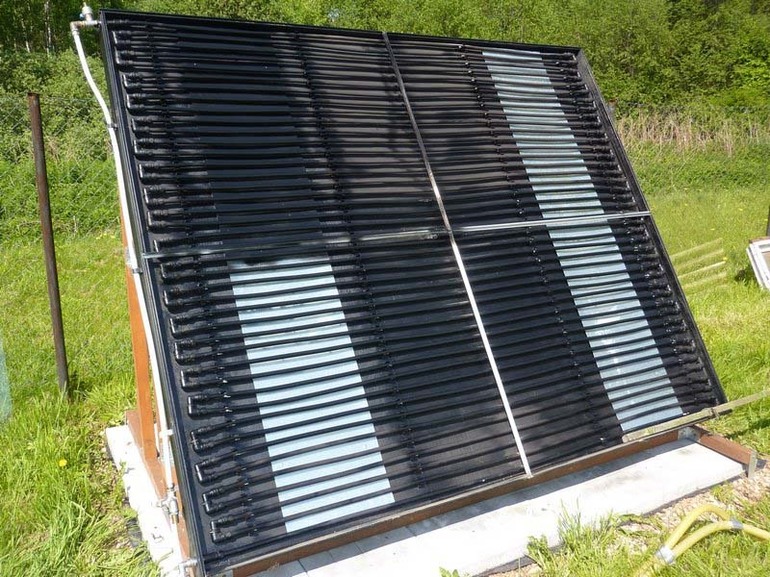
This is a metal sunlight receiver located in a sealed enclosure.
A heat exchanger is a steel sheet with fins welded onto both its surfaces (to increase heat transfer).
The bottom of the body is covered with heat-shielding material.on which a ribbed steel sheet is laid. The upper part of the case is closed with glass or transparent polycarbonate. On the side of the housing box there are integrated nozzles with flanges for connecting air ducts.
In addition, a fan installed in the duct will be required to drive air into the room.
Flat water heat generator
Of great interest to home craftsmen is a flat, home-made solar collector, thanks to which it is possible to heat water. This heater traditionally has a flat body, usually made of metal or duralumin.
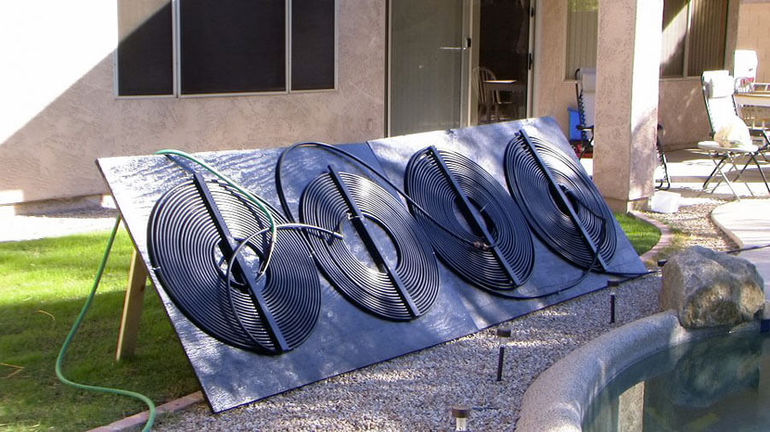
In it, a copper or aluminum heat sink with a copper coil located inside it, through which liquid circulates, is laid on a heat-insulating gasket. The heat sink itself is covered with a black absorption layer for better warming by the sun.
The heat sink, heating up from the sun, gives off its heat to the liquid circulating through the coil, which is delivered to the storage tank.
If heated water is not consumed and gradually cools down in the storage tank, it is forced out of it by the heated liquid and enters the collector again. From above, the heater body is closed with glass to protect it from atmospheric effects, which reduces the efficiency of the heater.
Vacuum water heater
This is one of the complex models of a solar heat generator, which is also expensive to manufacture. It consists of a vacuum glass flask, in which a coil of copper tube filled with refrigerant is mounted.
The ends of the coil exiting the bulb are connected to a heat exchanger through which water flows.
Under the influence of the heat of the sun, the refrigerant in the coil boils and turns into hot steam, which rises through the pipe into the heat exchanger. There he gives up his thermal energy to the coolant, cools, turns back into a liquid and returns to a glass flask.
Production of a heat receiver and necessary materials
In order to independently produce a solar water heater, certain materials and the scheme of the collector itself will be required.
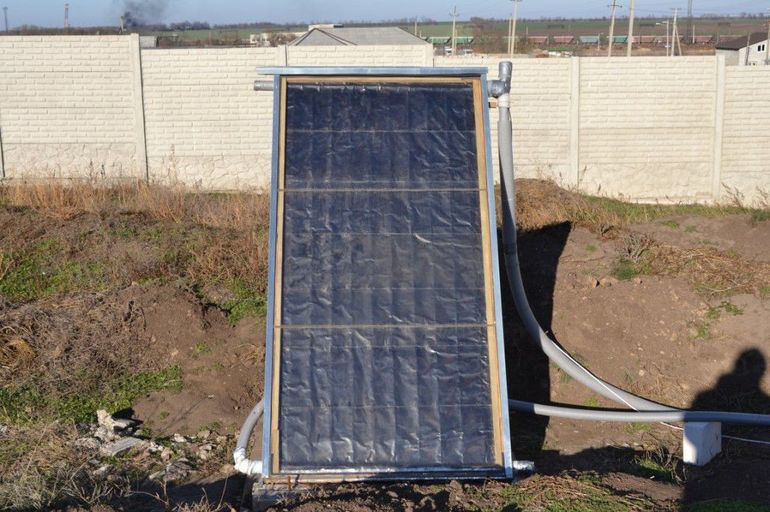
Often, improvised materials will be enough for a home-made heat generator, which can be found in the garage or in the attic of a private house, and the scheme can be downloaded from the Internet.
The case for the heat generator is easiest to make of wood. At the bottom, lay a thin sheet of foam or a layer of mineral wool. The best option would be to use old casements from wooden windows.
For the heat exchanger, you can use materials at hand in the form of
- Copper thin-walled tubes.
- Heat exchanger from an old refrigerator.
- PEX polyethylene water pipes.
- Various thin-walled polymer pipes, especially black.
- Panel metal radiators.
- Coiled into a flat bay of a regular garden hose.
Almost any capacity of up to 40 liters is suitable for a drive heated by the sun.
Naturally, a self-made solar collector for heating a house does not have a good heat storage, therefore it is recommended to warm the tank well. Otherwise, the heated water will cool quickly, so the coolant should be used immediately after it comes from the heat exchanger.
A storage tank is usually used to maintain pressure in the heating system and to distribute the water heated in the collector.

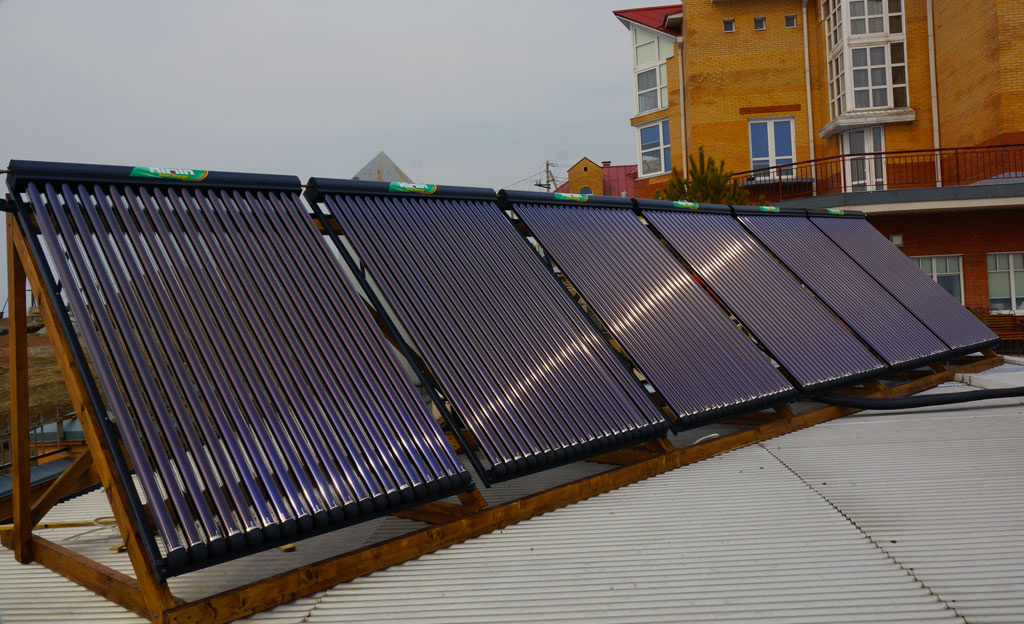



Alas, no comments yet. Be the first!